Restrictions, Rules and Diet Rotation
It’s possible that my personal diet has the longest name out of all documented diets known to mankind.
I am on a gluten free, multiple allergen free (dairy, soy, corn, nightshades, citrus, fish, egg, nut, onion, garlic etc.), sugar free, organic, blood sugar friendly, rotation diet that follows the principles of food combining and contains enough calories to gain and maintain weight.
Is your head spinning yet? Mine was.
At first, all of the restrictions and the many complex rules made me want to run and hide in the corner with a bushel of celery and a bag of rice cakes. Yet, once I took a deep breath and assessed the situation, I realized that my diet was merely just another puzzle. All puzzles have solutions.
And guess what? It’s working.
Where to Begin
First, you and your doctor, naturopath, nutritionist or chiropractor must figure out your personal food sensitivities. Most often, gluten, dairy, soy and sugar are the instigators in inflammatory responses in the body. Additionally though, we all have at least a few odd foods that our body specifically can’t handle. Some of us with impaired immune systems end up having more additional sensitivities than we can count on all twenty fingers and toes. It’s crucial to use your practitioner’s help in figuring out what those are. For me, either Autonomic Response Testing (ART) or bioenergetic screening methods such as ZYTO have been most helpful.
Why Do I Have Food Allergies?
Most of us are aware that food allergies and sensitivities cause inflammation, but many don’t realize that food allergies are often the result of pre-existing inflammation within the body. Typically, this pre-existing inflammation has been caused by immune dysfunction or an immune system invader, such as a toxin, bacteria, fungus or parasite. An immune response to a toxic or infectious invader often begins in the digestive tract, where 75% of your immune system resides, and irritates the lining of the intestines.
Our intestines are built to both fuel and protect the body. They have the ability to allow essential tiny substances into the blood stream, such as nutrients like amino acids, fatty acids and minerals, but they also have the ability to block larger more harmful molecules that we ingest from being absorbed into the blood stream. Yet when your intestines become inflamed, the spaces within the intestinal lining separate, and the larger unwanted molecules residing in our digestive tract are allowed to pass through.1 This means that when we consume foods that are difficult for our body to process or that cause inflammation (like wheat, corn, dairy, soy, nuts, etc.), the lining of intestines separate further and undigested particles of food are allowed to pass into the blood stream, along with intestinal bacteria, viruses, fungi and toxins.2 The body sees these large molecules as harmful invaders and it triggers an antibody response, even if the particle is merely food. The antibody response evokes detrimental cytokines and oxidants, which create a myriad of unpleasant symptoms and systemic inflammation. This phenomenon is known as intestinal permeation, or Leaky Gut Syndrome.
My What is Leaking?
Intestinal permeation, or “leaky gut syndrome“, sounds like the butt of a silly joke (no pun intended). Yet, Leaky Gut Syndrome and food allergies are no laughing matter. The symptoms of food allergies often go undetected or are mistaken for other conditions, therefore allowing the undetected reactions to deteriorate the lining of the intestines and further inflame the rest of the body, including the brain.3, 4 Not only is the digestive system responsible for providing the nutrients and fuel that the functioning of your entire body depends on, but it also has a direct effect on our neurological health. When the epithelial cells of the digestive walls become inflamed, the epithelial cells of the blood brain barrier also become inflamed, therefore leaving our brain susceptable to the toxins, infection, and inflammation that have been released into our bloodstream.5
Food allergies and intestinal permeation produce a myriad of symptoms, some of which include stomach pain, rapid heart beat, hot flashes, bladder disfunction, sinus issues, migraines, brain fog, and chronic pain. While these symptoms are concerning, the real danger lays behind the affects on the body that you can’t feel or see. Some people with food sensitivities claim that consuming potentially allergenic foods really don’t noticibly bother them, but what they are unaware of is the silent suppression of their immune system, the destruction of the villi in their intestines, or the weakening of the central nervous system. The resulting damage and inflammation slowly and stealthily weakens the body, therefore leaving it susceptable to serious health effects such as malnutrition, heart disease, and even cancer. In order to repair inflammation and damage and strengthen the body, complete elimination of allergens and sensitivities, as well as a rotation of “safe” foods, is key.
Rotation Diets
Eliminating and abstaining from allergens is key in healing the immune system, digestive system, and inflammation throughout the body, including the brain. In an informative article about gluten sensitivity, nutritionist Donna Gates writes “Studies have shown that the smallest amount of gluten, say a cracker the size of 1/8 of your thumbnail, will have a prolonged inflammatory effect in the body for up to 6 months after ingestion if you are gluten sensitive.“6
After one fully masters the elimination of gluten and other allergens from their diet, it is helpful to consider rotating foods. Rotation aids in the healing of the immune system and widespread inflammation, and is also critical in preventing the development of new or additional sensitivities, as well as maintaining your list of “safe” foods. When a patient’s intestines have permeated, undigested food particles leak into the bloodstream until the gut has a chance to heal. By rotating foods from a patient’s “safe” list, negative immune responses to a particular food is less likely, therefore reducing the likelihood of the development of a repetitive and chronic immune response. The body typically takes 4 days to rid a food from its system and regenerate histamine, therefore a four day food rotation diet allows the body to build tolerance and strength while eliminating the damaging effects of a histamine related or immunological response. A 4 day rotation diet allows the body to breathe and heal, therefore providing an opportunity for a stronger immune system, digestive system, and nervous system.
What To Eat When You Can’t Eat “Anything”
So, you have your list of allergies and your list of “safe foods” in hand. You also know that your digestive system is impaired (and you may feel as though someone sucked the energy out of you with a vacuum cleaner). This begins to look like a recipe for starvation. I’m here to tell you though that it doesn’t have to be. Personally, through allergy elimination, food rotation, and proper food combining, I have been able to reduce inflammation, reduce my allergen list, and gain some much needed weight. And, I never go hungry.
Food combining is optional and can complicate an already challenging diet plan, but it can also greatly aid an impaired digestive system in processing food and quieting digestive upset. When our digestive system is overtaxed by infection, inflammation and toxicity, it stops producing adequate amounts of the the acid and enzymes required for proper digestion. When we consume carbohydrates and protein at the same time, they each require an ample amount of a different kind of digestive enzyme. These two enzymes cannot effectively be produced together, especially in an impaired digestive tract. Protein requires the production of the enzyme pepsin, and carbohydrates require the production of pytalin. When produced at the same time, they cancel each other out and further reduce stomach acid, making digestion even more difficult. For the rules of food combining, scroll to the bottom of the page or check out a detailed article here.
I’ve gone to my favorite allergy friendly foodies to round up some recipes that are friendly to an allergy elimination and rotation diet. Tailoring recipes to fit your specific needs is important though, so keep in mind that this is just a sample of the many possibilities of diet rotation. For example, some recipes may include garlic, which you may be sensitive to (as I am). Exercise your creativity and find what works for you. Here, I’ve used a 4 day rotation diet as a relaxed framework to present the rockin’ recipes. You’ll want to spend more time on your rotation diet though, in order to be sure that you aren’t repeating or over-consuming any foods or ingredients from your “safe” list. So, don’t be afraid to swap animal proteins, grains or oils in the recipes in order to fit your four day rotational needs.
 BREAKFAST-
BREAKFAST-
Day One:
Sketch Free Vegan Eating’s Sweet Potato Vanilla Patty Cakes
Day Two: Affair’s of Living Coconut Carrot Mash with Bacon or Ground Beef and Collard Greens
Day Three: Eat This’ Teff Porridge
Day Four: Diet Dessert and Dog’s Grain Free Porridge (personally, I am allergic to walnuts so I used sunflower seeds, and did not include a fruit)
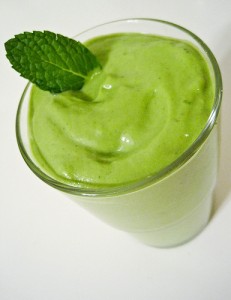
SNACK –
Day One:
Affair’s of Living’s Shamrock Shake
Day Two: Fit Daffy’s Coconut Apple Pudding
Day Three: Nourishing Meal’s Pumpkin Puree and Elana’s Pantry’s Oven Roasted Broccoli inside of Sketch Free Vegan Eating’s Brown Rice Tortillas
Day Four: Gluten Free Cat’s White Bean Dip with Gluten Free Day’s Flat Bread (also works well with amaranth flour, for rotation purposes)
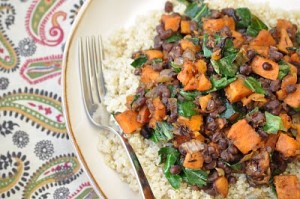 LUNCH –
LUNCH –
Day One:
Nourishing Meal’s Adzuki Bean and Yam Hash
Day Two: Affairs of Living’s Socca with The Daily Dietribe’s Roasted Brussel Sprouts and Acorn Squash
Day Three: Diet Dessert n Dog’s Tuscan Bean and Chard Soup
Day Four: Simply Sugar and Gluten Free’s Black Bean, Quinoa and Butternut Squash Salad (I use Millet instead of Quinoa, and grapeseed oil as dressing. Sweet peas or roasted turnips are also a great replacement for squash.)

SNACK –
Day One: Jane Casey’s Kitchen’s Blueberry Avocado Smoothie (I personally use raspberries. Mmm!)
Day Two:
Elana’s Pantry Kale Chips and Carrot Fries with Sauerkraut
Day Three: Affair’s of Living’s “Seaweed Crack”
Day Four: Affair’s of Living’s Flaxseed Crackers
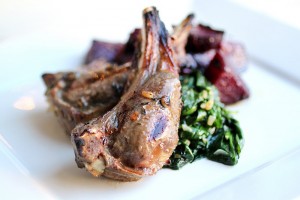 DINNER –
DINNER –
Day One:
Primal Palate’s Lamb Chops, Roasted Beets, and Sauteed Spinach
Day Two: Affair’s of Living Cumin Kissed Kale with added Ground Turkey Thigh Meat
Day Three: Eat Love and Train’s Gingered Green Beans and Pre-Cooked Quinoa with Nom Nom Paleo’s Roasted Baby Artichokes
Day Four: How to Cook Meat’s Broiled Pork Chops with Nom Nom Paleo’s Broiled Zucchini and Paleo Plan’s Asparagus
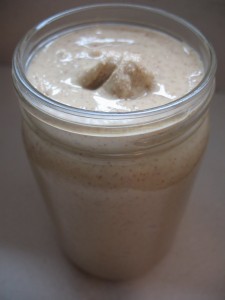
DESSERT or LATE NIGHT SNACK:
Day One:
Jicama dipped in Heather Eats Almond Butter’s Pumpkin Seed Butter
Day Two: Granny Smith Apple and Almond Butter
Day Three: Wild Rice Cake and Sunbutter
Day Four: Celery and Cucumber dipped in Tahini
Tips:
1. Make sure you rotate your oils and fats. I personally feel that it is safe to repeat oils throughout the day, typically up to three times. I then do not consume that oil for 4 days. Example for fat rotation (for 4 day rotation, 6 meals per day):
Day One: Pumpkin seeds or with 2 meals, Ghee with 3 meals, Almond butter with 1 meal
Day Two: Coconut Oil with 3 meals, Olive Oil with 3 meals
Day Three: Sesame Seed Butter or oil with 2 meals, Butter with 2 meals, Flax or Flaxseeds with 2 meals
Day Four: Sunflower Seed Butter or Oil with 2 meals, Grapeseed Oil with 2 meals, Avocado with 1 meal
2. Don’t over-consume brown rice. It’s easy to get stuck in the brown rice rut! There are plenty of other gluten free grains and starches. Example:
Day One: Brown Rice and Quinoa
Day Two: Amaranth and Teff
Day Three: Millet and Wild Rice
Day Four: Buckwheat and Sweet Potato
3. Beans are your friend! Example:
Day One: Lentils and Adzuki Beans
Day Two: Black Beans and Pinto Beans
Day Three: Kidney Beans and Garbanzo Beans
Day Four: Great Northern White Beans and Navy Beans
4. Don’t be afraid to venture away from chicken. Examples:
Day One: Lamb
Day Two: Pork
Day Three: Beef
Day Four: Turkey
5. Don’t forget to rotate your spices and flavorings; they count too!
6. In order to keep your blood sugar stable, don’t eat carbohydrates and natural sugars without an adequate amount of fat. To stave off hypoglycemic episodes, be sure to consume fat and a small ammount of protein with every meal. Fruit and starches on their own temporarily spike glucose levels and cause a blood sugar crash 2 to 3 hours later, whereas protein and fats aid in maintaining blood sugar levels throughout the day. So, be sure to add a little seed butter to your sour fruits, or a little oil or butter to your gluten free grains.
7. Simple Rules of Food Combining (for more info, click here):
-Never combine fruits and fructose with other foods, unless they classified as a “sour” fruit. Sweet fruits are high in sugar and are naturally metabolized quickly, but when eaten with other food groups that digest much slower, the sugar is allowed to sit in the digestive tract and putrefy, therefore contributing to unhealthy levels of yeast and harmful bacteria. Sour fruits, such as granny smith apples, raspberries, cranberries or lemons, are safer to combine with other foods due to their lower sugar content and composition. Granny Smith Apples or Raspberries with nut/seed butters or avocado are great combinations. Sweet fruits are best eaten in moderation due to their effects on blood sugar and yeast levels, but when consumed they may be combined with a small amount of coconut oil or other non-protein oils and fats in order to maintain stable glucose levels. They combine very poorly with starches and protein.
-Never combine a protein and a starch (this means no meat and potatoes, chicken and brown rice, or ground beef and gluten free pasta). Protein and starches require different enzymes in order to digest properly in the stomach and the digestive tract. For optimal digestion, eat them at separate meals. Each go perfectly with vegetables and fat. Instead of a beef patty on a gluten free bun, try wrapping your burger in lettuce. Instead of meat in your chili beans, opt to cook them vegetarian style and eat them over gluten free grains.
Diet rules, restrictions, and rotation can be overwhelming at first. Most of those who are prescribed such diets are already low on energy and stamina as well, which makes approaching such treatment appear to be a monumental feat. Yet once a week or two goes by and your diet becomes routine, you will find that it isn’t as challenging as if first appeared. You’ll also find that it’s undoubtedly worth it. Stick with it, and allow your body the crucial chance to strengthen and heal. And, enjoy!
References
1 Leaky Gut Syndrome/Intestinal Permeability
2 Dangerous Grains
3 Headache and CNS white matter abnormalities associated with gluten sensitivity
4 Is Your Gut Leaky?
5 Alzheimer’s and Inflammation: How to Protect Your Brain
6 MUST KNOW for Gluten Sensitive People!






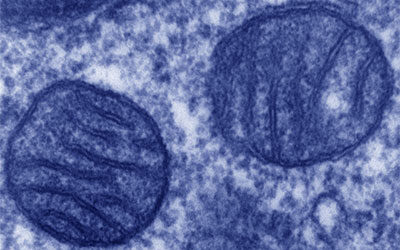


That’s quite nice but… please: if you have MCS avoid, AT ALL MEANS, animal fat. At all means. Animal fat is NOT necessary and it stocks up in our body helping toxins build up too. We only need good vegetable fat to live, olive oil mostly, but there are lots of other good source oils. Animal fat in bacon or butter will only do us even more harm.
Hi Maria,
Thank you for taking the time to read and respond to the article. I appreciate your point of view. I have to bring up the point though that every body has different needs, deficiencies and nutritional requirements, often based on what the body is afflicted with. Most often, patients with chronic infections require complete animal protein for sustenance and healing. While I do agree and believe there are diseases and conditions that respond well to a vegetarian or vegan diet, there are also other ailments that respond well to organic animal protein in moderation (I do agree that an excess of animal protein becomes toxic, as it is high in arginine and possesses other qualities that in excess become detrimental).
I have to agree with Candice on this. Over the years I have heard from soo many people with chronic environmental illnesses who state that they NEED animal protein at regular intervals in order to feel nourished. A plant/vegan diet is very cleansing and an animal/fat diet can be very nourishing. Many with EI need to be nourished before they can be cleansed. This is just what I have heard in forums over many years. There are certainly individuals that do better with a vegan diet but the majority with a cluster of environmental illnesses do report they need animal protein to feel good.
That said, I believe it is possible to over time transform one’s metabolism. I did it myself. I used to eat animal protein 3x day and had to have a certain amount with each meal otherwise I would get very hypoglycemic. After years of eating that way, I eventually was able to incorporate wheatgrass, fresh veggie juices and lots of raw salads. I even was able to reduce the #times a day I ate animal protein, and ate less at each sitting. Not everyone with this illness is at that stage of recovery.
Wonderful points, Julie.
I too, had to begin with eating animal protein 3 times per day for metabolic reasons. When our bodies become burdened and taxed by toxins, infection and inflammation, protein and an adequate intake of amino acids becomes crucial in healing tissue (including the brain), strengthening the immune system and metabolic processes in the body and especially in maintaining glucose levels. In order to achieve proper neuroendocrine function, our bodies require a complete amino acid profile and in the beginning of treatment, we typically need an abundance to push ourselves a place where we are strong enough to begin to heal. Much like you Julie, I now only consume animal protein once per day, and every 4th day I now have a “detox” break. I feel much healthier than when I was vegan.
Thanks, I thought this was a really helpful guide thorugh the minefield of severe food intoleramce. You also may find our website interesting: http://www.mcs-aware.org. There is information on total food intolerance there too.
Thanks again!
Nicki
Thanks for stopping by Nicki! Love your website, great layout. It says you’re a charity for environmental illness? I’d love to hear more about that, what type of services you provide (you can send me a private email through our “contact” page). I read your article about giardia, which I found very interesting. I have a long history of Crohn’s disease since adolescence, but I also got giardia while traveling in Laos in 1999. I probably treated it with flagyl back then and it seemed to go away, but now you have me wondering if maybe it didn’t eradicate all the cysts. The only issues is that I react dreadfully to any treatment, herbal or otherwise. I took a wormwood herbal parasite cleanse once and after one dose I was up for 24 hours with severe breathing issues. I guess the first step is to get tested again to see if they can detect the parasite in me. Thanks for commenting here. x Julie
I am dealing for many years with a swallowing disorder from this illness so getting adequate nutrition has been very difficult as i also have allergies. often reach for things that go down easily in order to survive(ice cream). I enjoyed the informative article and also see recipes for pudding like texture that i might be able to get down- will try it. I know i have leaky gut and also am working on that… the vitamix is a lifesaver. I too am tested using kinesiology- I found the blood tests for food allergies were different from what came up ok in kinesiology-When i tried to eat what came up ok on the blood tests that holistic dr came up with i had reaction yet when i had foods that came up bad in blood tests, i was ok with them—can very confusing-
Candice, this is such a great introduction for people just embarking on an allergy-free diet, and a fabulous list of pointers for anyone already on one. Thanks so much for this–and thanks for the link to my blog as well. :) So many of those foods sound delicious to me, sensitivities or no sensitivities!
Hi, this is a helpful guide on combining food the right way in order to be healthy. I love this. You may also find our website useful.
Thanks
Aborigho
http://healthylivingalways/how to combine foods to lose weight